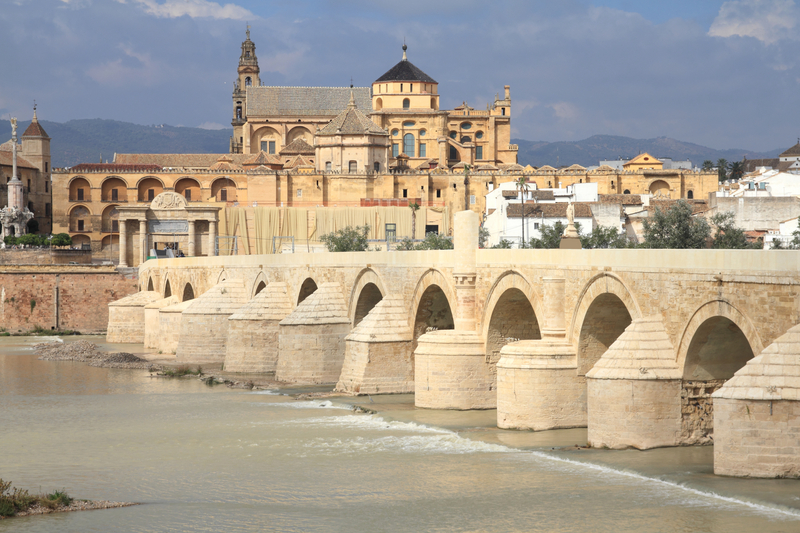Rich in a history spanning over 2,000 years, Cordoba, Spain is a captivating destination. Also known as the Pearl of the Moorish Spain, Cordoba was founded in 169 BC by Iberian settlers who contributed influences from the Greek, Carthaginian and Punic cultures. In 152 AD, Cordoba came under the auspices of Claudius Marcelus of Rome who encouraged development of the city. There is considerable archaeological evidence of ancient Roman presence in the area including the Aqueduct and Roman Walls, the Roman Theater and El Puente Romano, the bridge that has spanned the Guadalquivir River since the time of Roman rule.
 Cordoba is located along the banks of the Guadalquivir River, making its location one of strategic value. Mining, trade and agriculture spurred growth and prosperity and by the early 8th century it was a thriving city. This attracted the interest of the Moors who conquered Cordoba in 711 AD. It was then declared an emirate of the Damascus caliphate. Over the next four centuries the city flourished under the reign of the Al-Andalus Emirate and was considered one of the greatest cities in Europe by many.
Cordoba is located along the banks of the Guadalquivir River, making its location one of strategic value. Mining, trade and agriculture spurred growth and prosperity and by the early 8th century it was a thriving city. This attracted the interest of the Moors who conquered Cordoba in 711 AD. It was then declared an emirate of the Damascus caliphate. Over the next four centuries the city flourished under the reign of the Al-Andalus Emirate and was considered one of the greatest cities in Europe by many.
During this period of Cordoba’s history, education, culture and commerce blossomed and Muslim, Christian and Jewish populations coexisted peacefully side by side. Fascinating remnants of this era of enlightenment can still be explored in the Historic Quarter in southwest Cordoba.
One of the finest and most exquisite examples of Moorish architecture in the Historic Quarter is La Mezquita, as is attested by the roughly 1.5 million annual visitors. Originally constructed by the Moors and called the Aljama Mosque, this magnificent and imposing structure took more than 200 years to complete. When Fernando III captured Cordoba in 1236 AD, La Mezquita was converted to a Catholic Cathedral. Extensive renovations to portions of the structure were carried out but even after conversion much of the original Moorish architecture remained. There are more than 840 stately red and white columns of Moorish design ascending into graceful arches throughout its 24,000 square meter expanse.
In Cordoba, there are many fine monuments, but the city is better known for its many beautiful patios and gardens. In 1918, the Festival de Patios was first held as a way to honor the efforts of local residents in creating beautiful patios and gardens, a traditional and intrinsic part of the Cordoban home and culture. The festival is held the second week of May each year with homes all across the city opening their patios to the public who then select the most beautiful patio in the city. The Festival de Patios is also a wonderful opportunity to meet residents of the area and sample the delicious local cuisine at the many delightful restaurants and tapas bars.
Of the many beautiful sites found in Cordoba some of the most notable include: Casa Andalusi, the lovely gardens of the Alcazar de los Reyes Cristianos, the Juderia or Jewish Quarter, the ruins of the palace city Madinat Al-Zahra and many others. Museums located throughout the city feature collections of items ranging from antiquities and fine art to botanical gardens.





